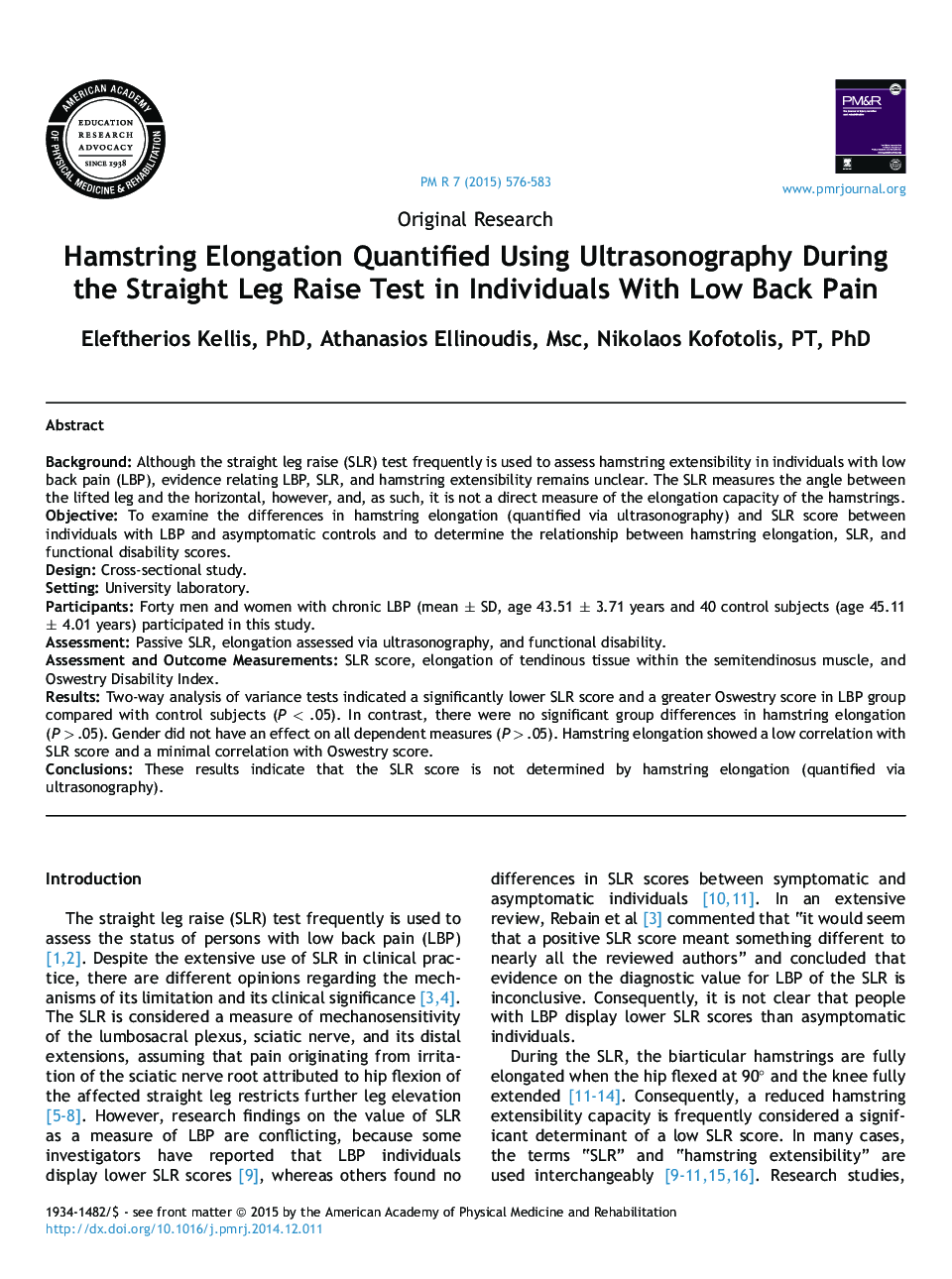| Article ID | Journal | Published Year | Pages | File Type |
|---|---|---|---|---|
| 2704941 | PM&R | 2015 | 8 Pages |
BackgroundAlthough the straight leg raise (SLR) test frequently is used to assess hamstring extensibility in individuals with low back pain (LBP), evidence relating LBP, SLR, and hamstring extensibility remains unclear. The SLR measures the angle between the lifted leg and the horizontal, however, and, as such, it is not a direct measure of the elongation capacity of the hamstrings.ObjectiveTo examine the differences in hamstring elongation (quantified via ultrasonography) and SLR score between individuals with LBP and asymptomatic controls and to determine the relationship between hamstring elongation, SLR, and functional disability scores.DesignCross-sectional study.SettingUniversity laboratory.ParticipantsForty men and women with chronic LBP (mean ± SD, age 43.51 ± 3.71 years and 40 control subjects (age 45.11 ± 4.01 years) participated in this study.AssessmentPassive SLR, elongation assessed via ultrasonography, and functional disability.Assessment and Outcome MeasurementsSLR score, elongation of tendinous tissue within the semitendinosus muscle, and Oswestry Disability Index.ResultsTwo-way analysis of variance tests indicated a significantly lower SLR score and a greater Oswestry score in LBP group compared with control subjects (P < .05). In contrast, there were no significant group differences in hamstring elongation (P > .05). Gender did not have an effect on all dependent measures (P > .05). Hamstring elongation showed a low correlation with SLR score and a minimal correlation with Oswestry score.ConclusionsThese results indicate that the SLR score is not determined by hamstring elongation (quantified via ultrasonography).
